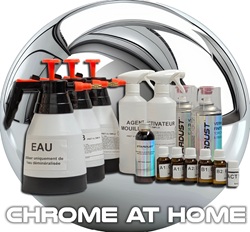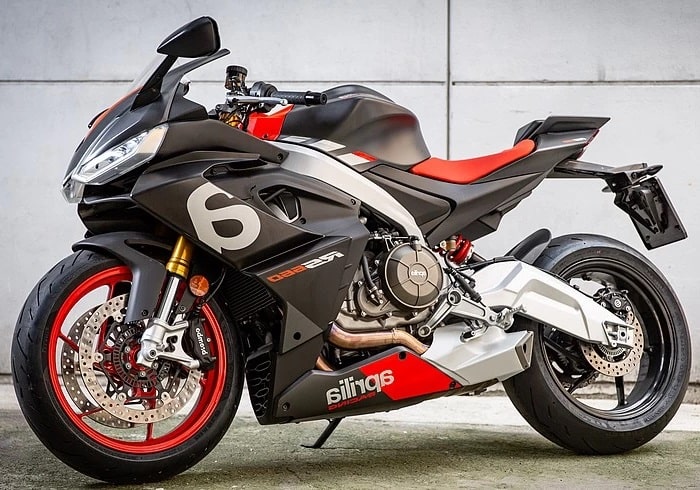 What are the particularities in the application of a finish ?
What are the particularities in the application of a finish ?
When you are a professional body painter, you can come across many occasions in your career where you are asked to apply paint on an unusual vehicle or "exotic" support. It can be a ski, a motocross, an old bike to renovate, a motorcycle helmet, an ULM, a kitchen plan, a model radio, a statue... The list is long and could be endless .
The products are always more or less the same. We use body paints or epoxy resins, etc... These famous paints that we think reserved for the automobile are simply paints, whose particularity is to be the most resistant and also the most beautiful. They can therefore be used perfectly on any medium, or almost !
However, there are technical specificities in each case, which relate to the different characteristics of the machines and objects that will be painted and also relating to their use and destination.
Depending on the shapes, dimensions and weights, materials and conditions, the painter learns to adapt to all the supports and all the machines given to him to paint. It is certainly not at school when we do a CAP in painting that we are going to prepare ourselves for this. This is an opportunity for the ambitious painter to show imagination and ingenuity to solve the various challenges and difficulties that arise.
So how do you paint the hull of a jet ski that weighs 350 kg ? How would you apply varnish to the hull of a 10m long boat and achieve a dust free finish ? And how will you place all the stickers that the customer requests on his bike frame ?
The specificities of the techniques applied to painting
Fortunately, the world of spray painting is exciting, challenging and changing every day, with new projects brought to us by customers. When it comes to personalizing the vehicle entrusted to us by a customer with a unique decor, it is often a complicated but very motivating challenge for the painter specializing in bodywork decoration.
Faced with the lack of specialized and motivated professionals to think outside the box, there are some atypical painters, dedicated to customization, who have specialized in a particular branch, thanks to their experience and also thanks to their personal network.
When you have decorated one or two Quads, word of mouth has its effect and you often get a clientele that multiplies over the months and years. When you do very good work, when the customers are very satisfied and above all when you have succeeded in unlocking the secrets and the specific techniques applied to painting on this or that machine, you can call yourself a specialist painter in an area of specialty where no one has gone before.
When faced with new work or projects on unusual surfaces, there are two types of painters: those who prefer to remain in the safety of routine and refuse the order, and those who say : "It's okay, just do it. I trust I will get there, I take care of your Custom paint and you will not be disappointed ! »
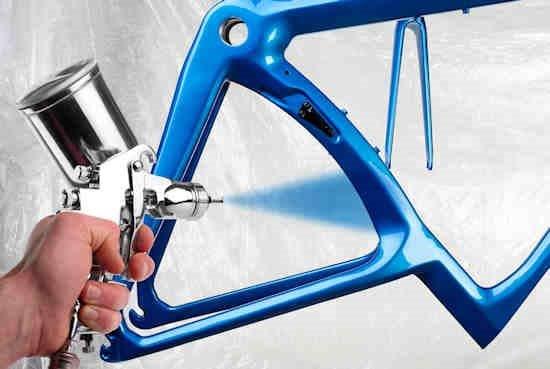 Specific features of bicycle paint
Specific features of bicycle paint
This area was not one a few years ago, but today there is a real craze for customizing bicycle paints. The specificities of bicycle paint are multiple and this is the subject of a complete article. It is often requested by customers who are fans of racing bikes or mountain bikers, to varnish with ultra-resistant to shock finishes. The specificities of painting on bicycles are therefore, for example, the choice of a particular product allowing increased resistance against flying stones and shocks of all kinds which can attack the paintwork on bicycle frames. This requires the use of special varnishes or the use of flexibilizing additives.
How to paint a motorcycle?
There are many painters in France specializing in motorcycle painting. They are equipped with half paint booths and know all the techniques and specificities concerning the art of how to paint a motorcycle. This is a much more specialized field than that of automobile repair painting, because we often use more complex and more beautiful paints and we create decorations both with adhesive masking techniques and 'with freehand drawing techniques with an airbrush.
We also often encounter the same problems which have particular solutions specific to the motorcycle: for example, the presence of adhesives and logos under the varnishes, or the need to paint tanks up to the edge of the fuel supply. gasoline, or even paint ultra-flexible plastic parts.
How to paint a helmet?
This is probably one of the most complicated and arduous areas of decorative spray painting. There are many specifics to know and unfortunately there is no guide or clear training on how to paint a helmet that only those who have already tried know.
For example, it is necessary and often very complicated to install protective masks on areas of soft rubber, with elements that are impossible to dismantle. We must also protect all the foam and fabric areas that line the inside of the helmet from paint.
Finally, the almost majority of helmets that we buy have irregular surfaces, due to the presence of logos and adhesives under the varnishes. There are specific techniques for treating these surfaces.
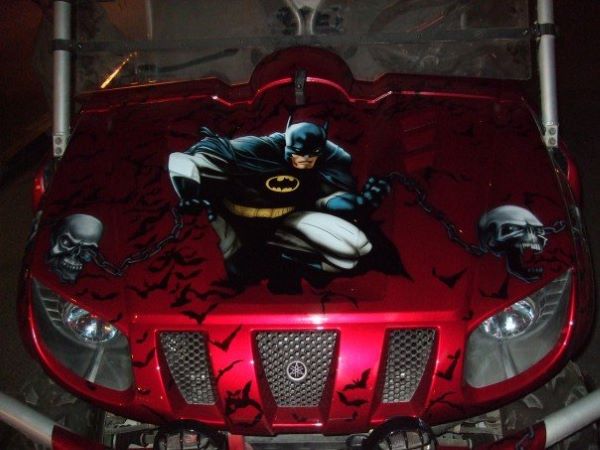 How to paint a quad?
How to paint a quad?
Anyone who has ever tried to paint Quad fairings knows exactly what it is. We may believe that it is a painting job like any other, but not at all, because to know how to paint a Quad, you need to know the problems concerning flexible plastic fairings and their solutions. This mainly concerns the difficulty in correctly adhering the different paints that we want to apply to the surface of plastics. These are in fact very resistant and very flexible plastics called polyethylene or polypropylenes. All professional painters know that these are among the most difficult plastics to hang paintings on. There are therefore very specific practices and techniques for painting Quads and keeping the paints flexible and resistant to peeling.
How to paint a boat?
In this maritime field, one of the first specificities of boat painting is being able to access the hull when you want to paint the underside. Before knowing how to paint a boat, you need to know how to maintain a boat which can sometimes weigh several tonnes in suspension. There are also very specific products that are only used in the marine world such as anti-fooling varnish, and there is a very particular difficulty in the world of boat painting, which is how to paint several coats of paint and varnish on a surface. , in an outdoor environment and without a booth, because most of the time, boats are too bulky to enter traditional paint booths.
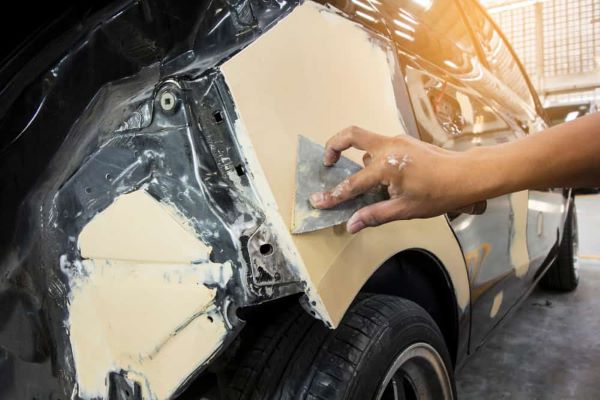
How to paint a car?
There is the practice of repair, and partial retouching of a painting, and there is the art of creating a complete car, or even decorating it, personalizing it. In the latter case, it is an exciting field where all possibilities and all ideas are permitted. Knowing how to paint a car is certainly a more difficult and restrictive exercise than painting the walls of your bathroom with a roller and a can of paint. Materials, tools, consumables are necessary, and above all a certain know-how are essential to implement all the different layers that make up a bodywork paint, from the primer to the varnish.
How to paint a portal?
Most portals have a metal structure, and its metal surfaces are exposed throughout the year to various factors of wear and tear due to bad weather. Humidity and rain represent the first factor in the aging of metal surfaces.
The oxidation of metals creates rust which gradually eats away the metal. Even non-ferrous metals are susceptible to oxidation.
Paints provide effective protection for metal portals: they protect surfaces from rain and humidity by creating a waterproof coating. Gate paints also have an anti-corrosion role thanks to their chemical composition which helps prevent and treat corrosion. In an article dedicated entirely to this subject, we show you in a few simple steps how to paint a portal while carrying out an efficient and lasting job.
How to paint a chassis?
How to paint a chassis? Steel or aluminum vehicle frames must be primed to protect them from corrosion. These surfaces are regularly in contact with water and humidity and must be protected from oxidation, that is to say rust which eats away and weakens metals.
On the frames, simple and effective paints are generally applied, which provide both the function of adhesion primer, anti-corrosion protection, and waterproof colored finish. As the frames are not directly exposed to the sun, epoxy frame paints can be used. These paints have the advantage of serving both as a extremely effective primer and as a very abrasion-resistant finishing lacquer.
General techniques for applying paints and lacquers
Drying paint and baking
Coating and varnishing paint










































